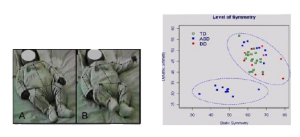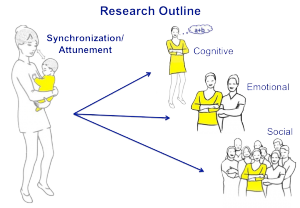Comparative Physiology of Mother – Infant Interaction across mammalian Species and implication for atypical development Disordersin collaboration with: University of Trento (Italy) and RIKEN Brain Science Institute (Japan) From an evolutionary point of view, mother-infant interaction is essential for the survival of mammalian infants. Therefore both mothers and infants are equipped with neural mechanisms that favor mother-infant interaction and are paramount for the development of mammalian infants. This study using genetic and pharmacological manipulations in rodents as well as physiological and behavioral testing in humans, aims to investigate the neural basis of early social interaction and gain new insights on the early development of child psychopathology (i.e. Autism Spectrum Disorder). |
 |
|
|
Parenting across Cultures and Mindsin collaboration with: Child and Family Research-NIH (USA); University of Nagasaki & University of Chiba (Japan) Although basic physiology of parental behavior is shared across mammalian species, higher cognition about parenting is culturally based. Aim of this research is to investigate employing behavioral protocols and neuroimaging techniques, intra and cross-cultural differences about human parenting and its effect on cognitive, emotional and social development. |
Early Bio-Markers of Autism Spectrum Disordersin collaboration with: ODFLab, University of Trento (Italy), Stella Maris Institute (Italy), La Trobe University (Australia); and University of Miami (USA) Autism Spectrum Disorder (ASD) represents a complex group of behaviorally defined conditions with core deficits in social communication. At present there remains a disconnection between the complex clinical aspects of ASD and the underlying neurobiology. Using retrospective and prospective analysis, aim of this study is to define biomarkers that can be used for early screening and diagnosis of ASD. As candidate biomarkers we have been studying early motor asymmetries (see figures below), as well as atypical acoustical features in early vocal production. |
 |

